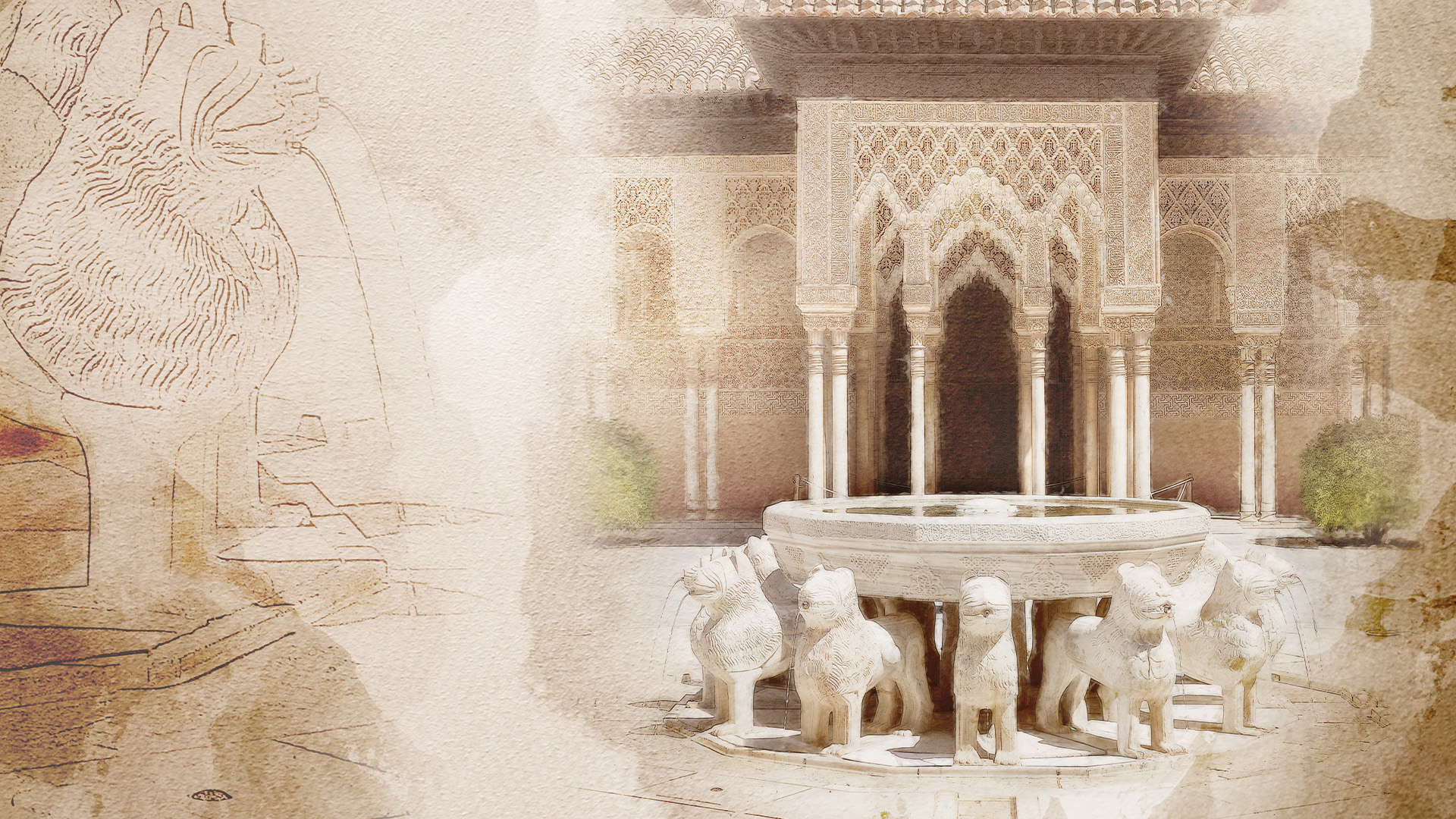The Lion Fountain is one of the most emblematic elements of the Alhambra in Granada, located in the centre of the Lion Courtyard. Consisting of a dodecagonal marble bowl supported by twelve lion sculptures, the fountain represents a refined example of Islamic art and hydraulic engineering. Built at the end of the 14th century by Muhammad V, the space was part of the Palace of the Lions, described by Ibn Zamrak as the ‘Castle of the Happy Garden’. Each lion has different characteristics, suggesting that the work was realised by different artists, but with a common vision. The fountain’s symbolism is linked to the sultan’s authority and the value of water in Islamic culture. Over the centuries, the fountain underwent alterations, such as the addition of an upper bowl and balusters, later removed to restore the original design. Inscribed poetic verses reveal its symbolism and importance within the palace complex of the Alhambra, a UNESCO World Heritage Site.
Fountain of the Lions (Alhambra)
